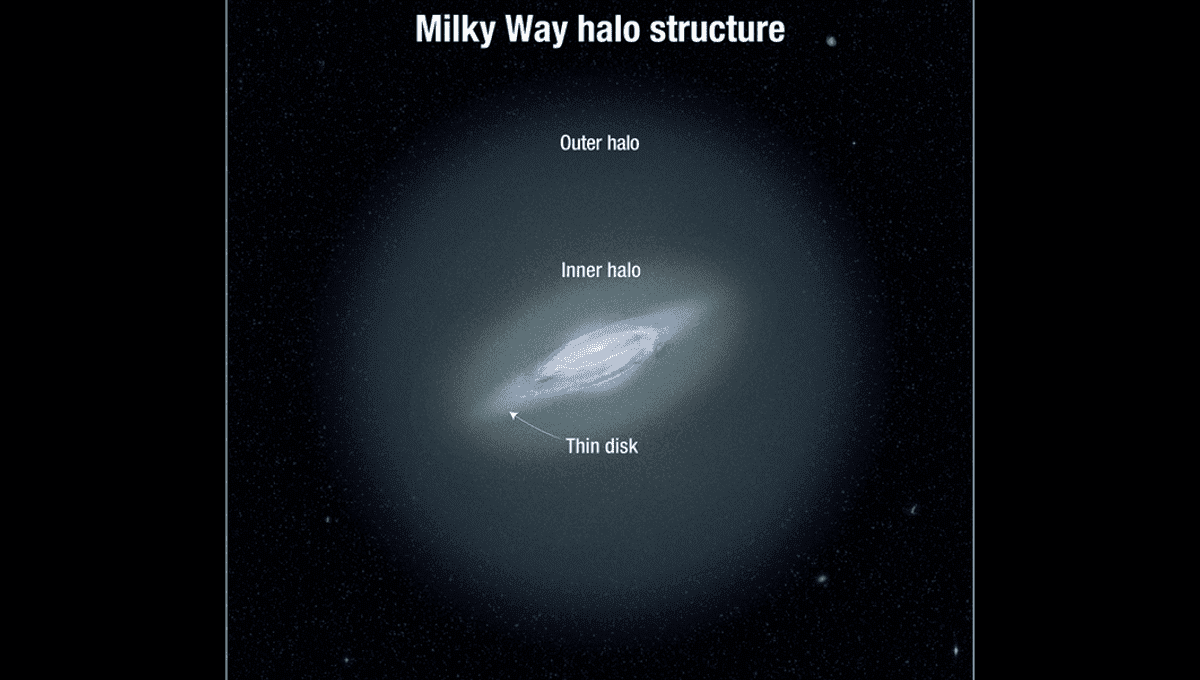
You may have heard that one day in the future, the Milky Way galaxy – in which we reside – will collide with Andromeda. If you include the outermost stars in each galaxy passing each other, then that day has almost come, following the discovery that some stretch halfway to our nearest large neighbor.
The galaxy, we were once poetically told, is: “A hundred thousand light years side to side.” This, however, excludes the galactic halo, which turns out to be a great deal more extensive.
Indeed, the American Astronomical Society’s 241st meeting heard that stars have been found over a million lightyears from Earth. Even these specimens may not mark the outer limits of the halo – we only know their distance because they are RR Lyrae stars, a rare class of objects that allow astronomers to calculate their distance.
“This study is redefining what constitutes the outer limits of our galaxy,” said Professor Raja GuhaThakurta of UC Santa Cruz University in a statement. “Our galaxy and Andromeda are both so big, there’s hardly any space between the two galaxies.”
The Pythons got quite a bit right. The galactic disk is indeed around 100,000 light-years across, with the Sun lying about 27,000 lightyears from the center, and there is indeed a major central bulge. However, around all this is the halo. It has a far lower density of stars but is nevertheless vital to the galaxy’s stability.
“The halo is the hardest part to study because the outer limits are so far away,” GuhaThakurta said. “The stars are very sparse compared to the high stellar densities of the disk and the bulge, but the halo is dominated by dark matter and actually contains most of the mass of the galaxy.”
Previous estimates of the halo have suggested it extends to 300 kiloparsecs (1 million light-years) from the galactic center. Like most round numbers, however, this is a rough estimate. GuhaThakurta and PhD student Yuting Feng went looking for RR Lyrae stars to add some precision.
RR Lyraes are variable stars with a characteristic swift rise and slow fall in brightness. They also display an association between the length of their cycle, their color, and the amount of light they emit on average. A comparison of their intrinsic luminosity and how bright they appear tells us their distance. This contrasts with the vast majority of stars, where it is quite hard to tell whether they are close and faint, or brighter and more distant, unless associated with a “standard candle” like an RR Lyrae or a Cepheid variable.
Feng found 208 RR Lyrae in the halo, with distances ranging from 65,000 lightyears out to 1,040,000 lightyears, suggesting the halo is at least as large as theoretical models suggest.
GuhaThakurta and Feng didn’t conduct their own search, instead using data from the Next Generation Virgo Cluster Survey, which investigates the largest galaxy cluster in the nearby universe. The long exposures required to study these galaxies also led to the imaging of our own galaxy’s more distant stars. The pair sorted through the data to find the RR Lyraes and measure their cycles so their distances could be established.
Source Link: Our Galaxy’s Outer Limits Stretch Almost Halfway To Andromeda